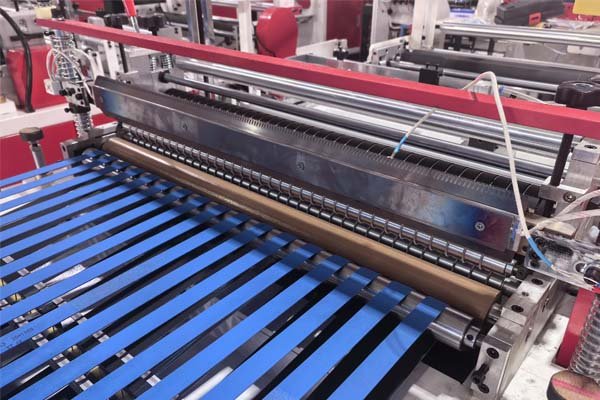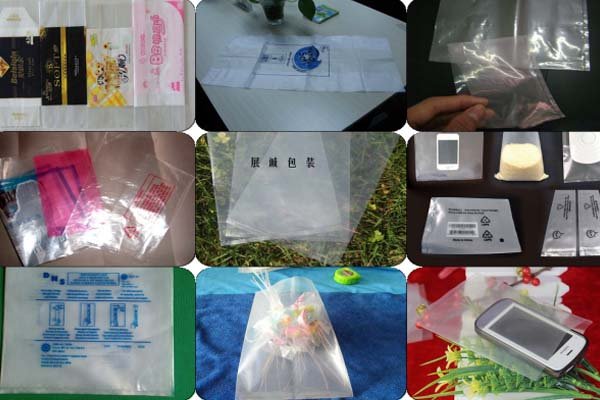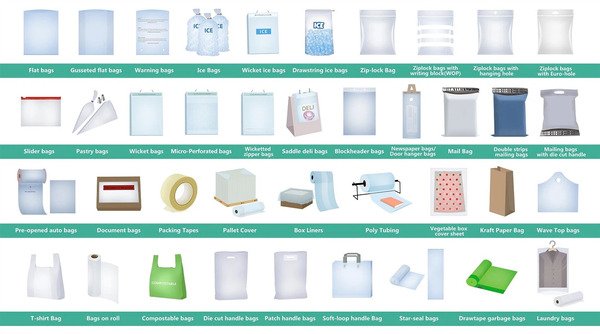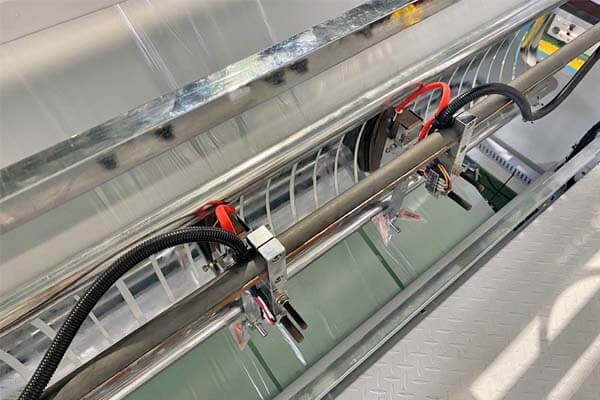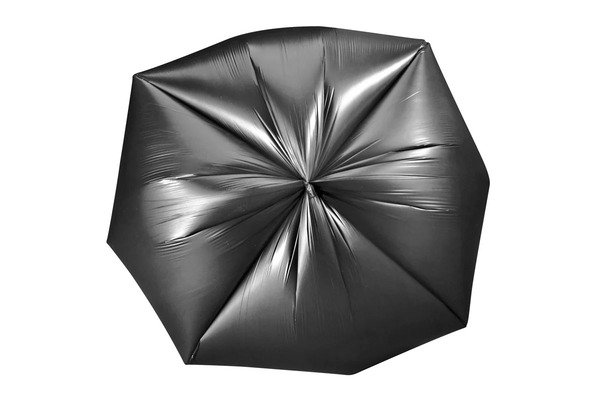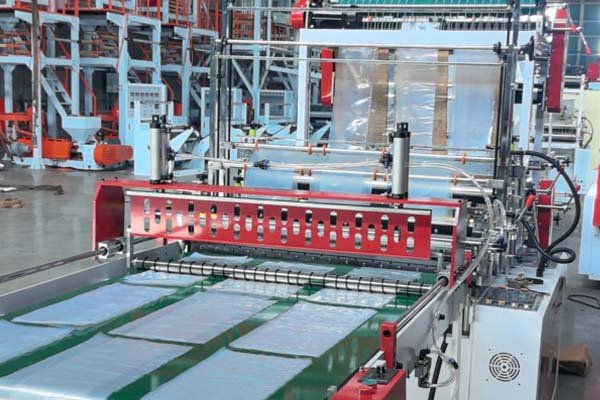
Manual or outdated methods for producing plastic bags often lead to inconsistent quality, slow production speeds, and higher labor costs. A flat bag making machine1 addresses these issues through automation.
A flat bag making machine is an automated system that transforms rolls of plastic film into bottom-sealed flat bags using a heat-sealing and cold-cutting process. It handles materials such as HDPE, LDPE, and PP.
The machine performs the entire process automatically—from feeding the material to sealing and cutting—ensuring consistent quality and high output. Operators can set bag length, production speed, and auto-stop parameters using a computer control system. This reduces manual labor and improves accuracy throughout the production cycle.
What Materials Are Used in Flat Bag Making Machines?
The choice of material impacts bag performance. These machines are compatible with various types of plastic film.
Common materials used include High-Density Polyethylene (HDPE), Low-Density Polyethylene (LDPE), Polypropylene (PP), and biodegradable options like PLA.
Each material offers specific properties suited for different applications.
High-Density Polyethylene (HDPE)
HDPE is strong and lightweight with a frosted appearance and a crinkly texture.
- Strength: Durable and puncture-resistant
- Common Uses: Grocery bags, t-shirt bags, garbage liners
- Machine Compatibility: Tension control systems ensure smooth handling of the rigid film
Low-Density Polyethylene (LDPE)
LDPE is softer and more transparent than HDPE, offering high flexibility.
- Flexibility: Stretchable and tear-resistant
- Common Uses: Food storage bags, garment bags
- Machine Compatibility: Intelligent temperature control prevents overheating during sealing
Polypropylene (PP)
PP is known for high clarity and rigidity.
- Clarity: Glossy and transparent
- Common Uses: Snack packaging, candy wrappers
- Machine Compatibility: Step motor feeding and cold-cutting provide clean, precise cuts
Material Compatibility Overview
| Material | Key Properties | Common Applications | Why It Works on BagMec® Machines |
|---|---|---|---|
| HDPE | Strong, lightweight, opaque | T-shirt bags, garbage bags | Tension control ensures flat sealing |
| LDPE | Flexible, clear, stretchable | Bread bags, produce bags | Temperature control adapts to soft film |
| PP | Clear, rigid, heat-resistant | Snack bags, candy wrappers | Cold-cutting blade delivers clean edges |
| PLA | Biodegradable, eco-friendly | Compostable packaging | Compatible with sustainable film processing |
How Does a Flat Bag Making Machine Work?
A flat bag making machine follows a continuous, automated cycle to convert film rolls into bags.
The process involves unwinding the film, feeding it to a set length, sealing the bottom with heat, cutting it, and stacking the finished bags.
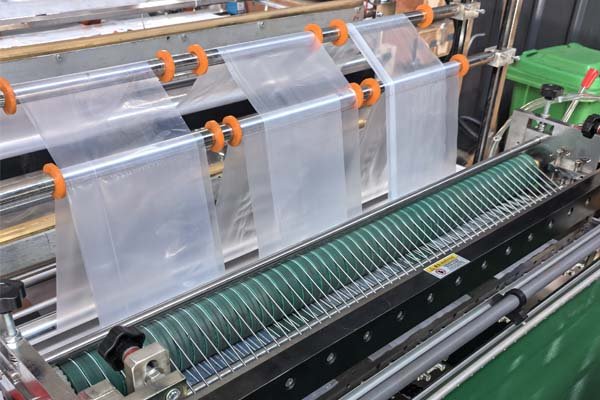
Stage 1: Film Unwinding and Feeding
The roll is mounted and fed into the machine using a controlled unwinding system.
- Component: Photoelectric sensor regulates smooth feeding without jerks
Stage 2: Positioning and Length Control
Accurate length and positioning are crucial for uniform bag size.
- Component: Step motor sets the film length precisely
- Optional: Photoelectric eye for detecting print marks
Stage 3: Sealing and Cutting
Bags are sealed and cut in one operation.
- Sealing: Heated brass bar forms the bottom seal
- Cutting: Cold blade slices below the seal for clean separation
- Components:
- Brass heating knife maintains even heat
- Alloy steel blade ensures a sharp cut
Stage 4: Automation and Stacking
Finished bags are counted and stacked automatically.
- Computer Control: Sets bag count and stops machine upon completion
- Production Speed: Adjustable (10–120 bags/minute) via inverter and main motor
What Is the Price of a Flat Bag Making Machine?
Prices vary based on configuration, size, and additional features.
Typical pricing ranges from $4,600 to $17,200 USD, depending on machine width and customization.
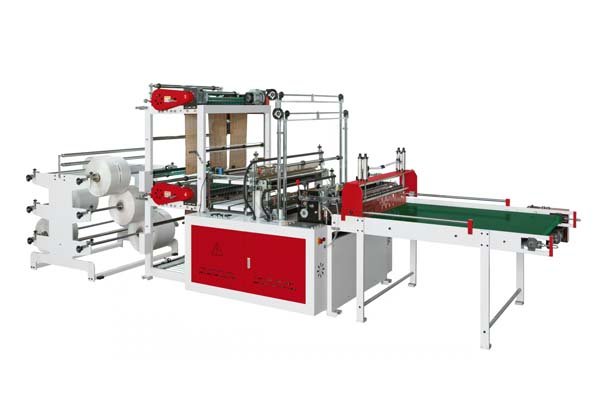
Factors Influencing Price
1. Machine Width
- Standard: Models up to 700mm wide are more affordable
- Custom: Machines up to 2000mm wide are available at higher cost
2. Optional Features
- Punching Unit: Needed for t-shirt style (vest) bags
- Specialized Components: Custom blades and sealing bars may affect price
3. Component Quality
- Standard: Includes reliable motors and inverters
- Upgraded: Available for high-speed or precision needs
Sample Price Scenarios
| Configuration | Features | Price Range (USD) | Target User |
|---|---|---|---|
| Entry-Level | 800mm width, manual stacking | $4,600 – $7,000 | Small-scale production |
| Mid-Range | 1000–1200mm width, auto counter | $7,500 – $12,000 | Medium-sized businesses |
| High-End | 1500mm+ width, punching unit | $12,500 – $17,200+ | Large-scale operations |
For an exact quote, specifications such as bag size, material, and desired speed are required. A detailed quote can be provided within 48 hours upon request.
Conclusion
A flat bag making machine offers automated production of various plastic bags with consistent quality and efficiency. It supports a wide range of materials and can be customized for different production needs and budgets.
-
Explore this link to understand the technology behind flat bag making machines and their benefits. ↩

